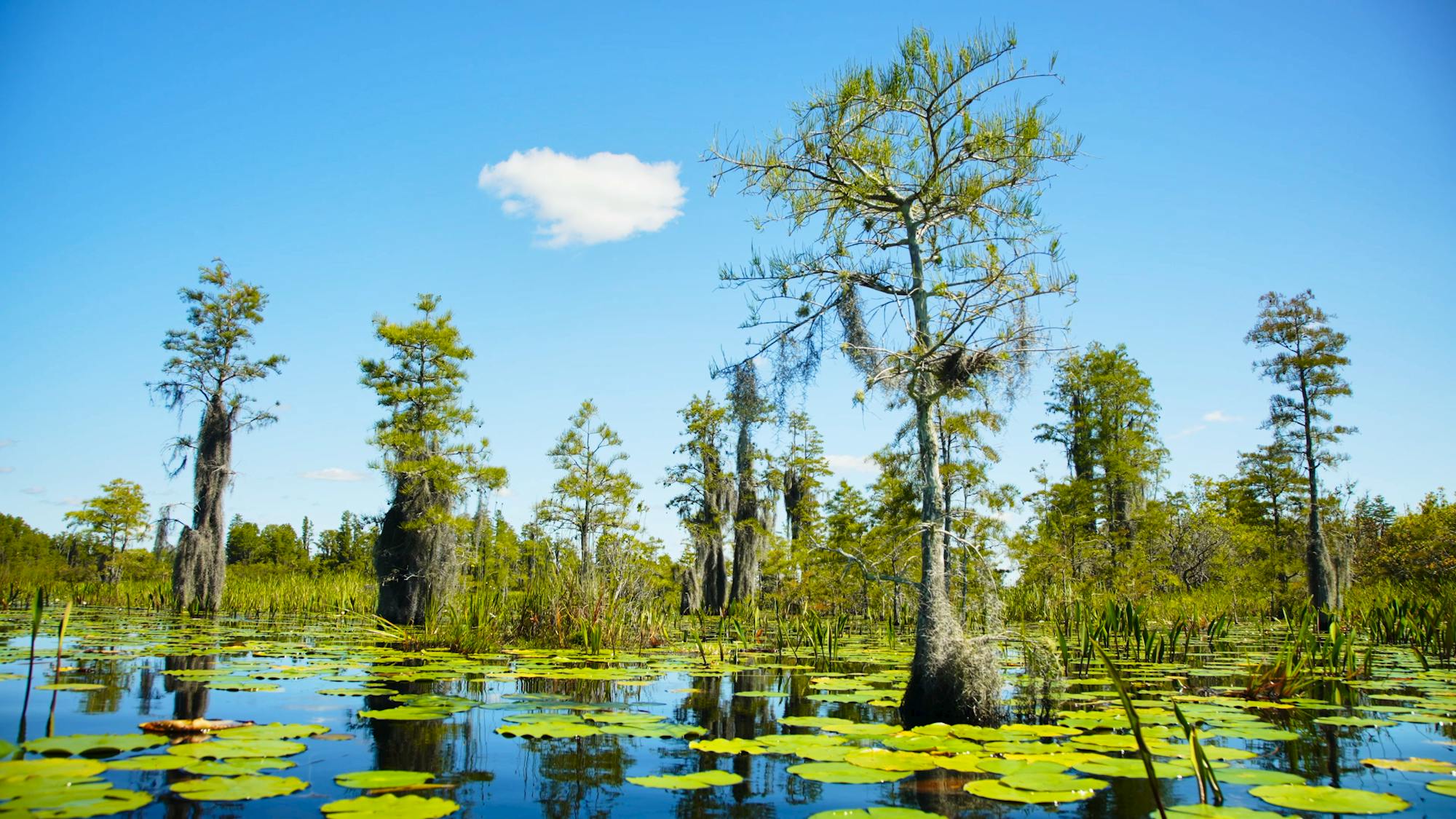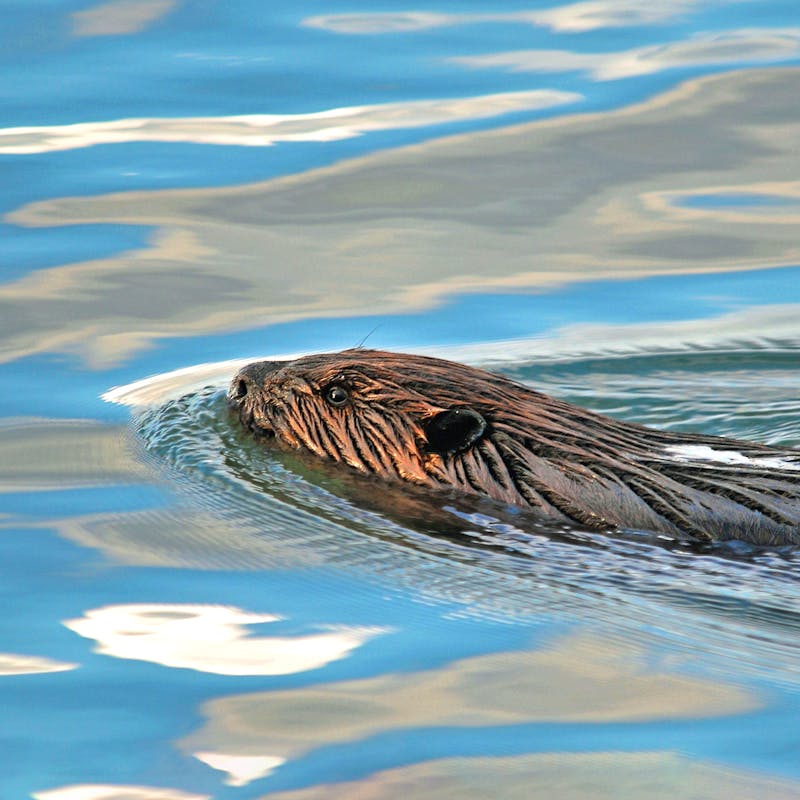People and animals alike depend on wetlands for fresh drinking water, a clean environment and flood prevention. Sometimes, though, we forget the beauty of these flooded ecosystems. For World Wetlands Day, Defenders of Wildlife's experts across the country reflect on their everyday work that centers on such unique, critical habitats.
Rare Fireflies and Being a Beaver Believer
Defender’s New Mexico Representative Peggy Darr started working on wetland conservation during her time as a natural resource specialist in New Mexico. She reminisced about on one warm summer night in the Los Potreros Open Space:
"While conducting amphibian surveys, my then co-worker whispered 'firefly,' and I looked up to see a single firefly flashing in the night sky above us," Darr said. "I grew up in Vermont seeing fireflies all the time and seeing them was always a magical experience."
But this was a chance sighting, she explained. Fireflies are rare in New Mexico and are widely declining. With Defenders of Wildlife, Darr still works on this collaborative coexistence project with Santa Fe County. This project has shown beavers' ability to drastically improve and create wetland ecosystems.
This work has been a major factor in recent sightings of fireflies in northern Santa Fe County, as the American beaver encourages a lasting clean water habitat for firefly larvae.
"The firefly species we found that magical night is a new species," Darr said.
As part of the collaborative beaver coexistence project with Santa Fe County, Darr has also watched a beaver colony grow from one dam to a maze supporting myriad wildlife species.
She said that as she continues to learn about beavers' way of life, her love and respect for them grows.
"Each visit amplifies my appreciation of their tenacity, and I am amazed at how much they can accomplish, if we just give them the chance," Darr said. "After learning from this beaver colony, I am a firm beaver believer. I know that if we let them, beavers will help us out of our self-created climate change and extinction crises."
Defenders of Wildlife has regional programs that advocate for endangered species in wetlands in the Southeast and the West as well.
Protect Communities, Protect Wetlands
The California Central Valley is 430 miles long between the Sierra Nevada and the Coast Ranges, and once contained millions of acres of wetlands. Now, only 10 percent of its historical capacity is expected to support nearly a quarter of the country’s food production, California residents and wildlife.
Last month, California was inundated with rain. Whole communities were underwater and public infrastructure was overwhelmed, especially in urbanized wetland areas. When managed properly, though, wetlands can naturally protect against flooding. This is how advocacy for wildlife habitat restoration impacts humans.
California Water Policy Advisor Ashley Overhouse lives in a “floodplain" (a low-lying area that floods during heavy rains). As the first band of Atmospheric Rivers/Bomb Cyclones drew closer this month, her local water district warned of localized flooding and what that would mean for the area.
"But what did that really mean? It meant that I used to live on a historical wetland," Overhouse explained.
After some extensive research and combing through confusing Federal Emergency Management Agency maps of her area, Overhouse found another stark reminder that over 90 percent of California’s inland wetlands are gone.
"To be honest, I started falling in love even deeper with wetlands than ever before," Overhouse said.
Defending Our Precious Wetlands
Thousands of species depend on wetlands for survival. Defenders is a voice for these creatures from the Sandy Bottom wetland in the mountains of North Carolina to the San Francisco Bay Delta in California. Defenders advocates for the giant garter snake, chinook salmon, endangered Red Wolves and various rare reptiles, amphibians and other species.
But, when we talk about wetlands in America, many first thoughts may lead to the Southeast. Ben Prater, the director of Defenders' Southeast program, has been involved in conserving wetlands for nearly 20 years and has fond memories of paddling in the Okefenokee in Georgia and exploring the Everglades in Florida.
Defenders most significant wetland work in the region is to defend the Okefenokee National Wildlife Refuge (NWR) from mining threats. This is the largest intact freshwater wetland in the east. Okefenokee is home to thousands of species and is an economic draw in rural Georgia.
Defenders continues the fight against strip mining in the Okefenokee NWR. Recently, the Army Corps of Engineers reaffirmed its support of a major mining operation the size of nearly 6,000 football fields in the Okefenokee.
Please donate to help Defenders of Wildlife continue working to protect and restore our important wetland areas and wild places, and the imperiled species that make these areas their home.











